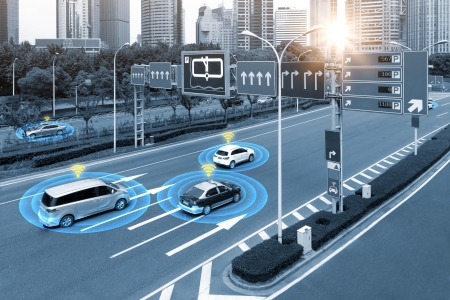Inside a self-driving vehicle, the vehicle and driver communicate by means of a Human Machine Interface (HMI) (see for example [52]). Outside a self-driving vehicle, the vehicle and other road users may communicate by means of an external Human Machine interface (eHMI) (see for example [53]). HMI and eHMI must ensure safe interaction with the vehicle. Communication may take place by stimulating one or more senses of the driver or other road user. An HMI can show icons on the dashboard, generate sound alerts and steering wheel vibrations. If drivers want to communicate with their vehicle, they can push steering wheel buttons, use a touch screen or voice control. An eHMI may announce the intentions of the self-driving vehicle to other road users, for instance by a text message on an external display, by laser projection on the road and by means of sounds. Communication of other road users with the vehicle may proceed via vehicle sensors that pick up non-verbal signals, such as the trajectory of the other road users.
Because of the importance of good communication, the best design for an HMI and eHMI is being studied. Currently, general design principles for intelligent transport and driver assistance systems are already available (see SWOV fact sheet Intelligent transport and advanced driver assistance systems (ITS and ADAS). Further research into HMIs is now underway, for example in the European MEDIATOR project in which an HMI is being developed for partly and completely self-driving vehicles to enable communication between the driver and the vehicle (mediatorproject.eu [54]). For eHMIs, further research is also needed, since many aspects still have to be explored to ensure that communication will be at its most effective [53].
Answer
